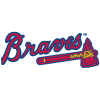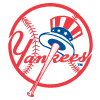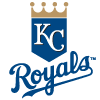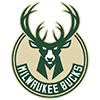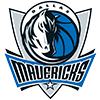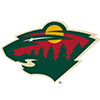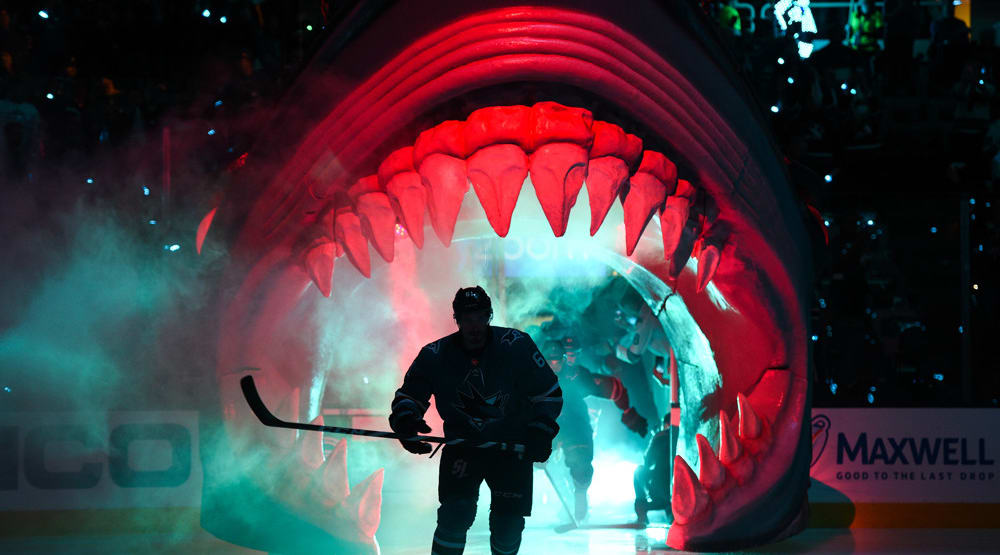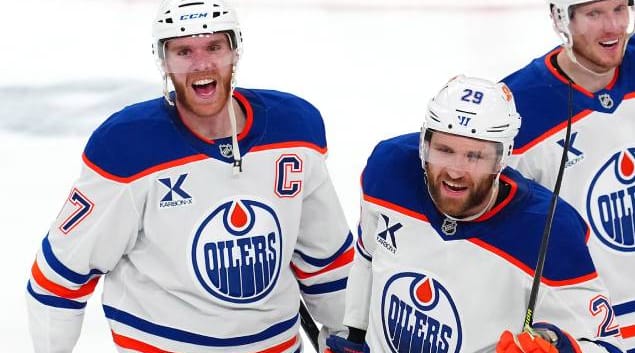This is the second of our annual two-part series detailing the top prospects in the NHL entering the 2023-24 season.
A couple of quick notes on this year's list before we get started.
- Each of the top four names on the list would be worthy No. 1 overall prospects in an average year.
- In terms of tiers, I would rank the Top-100 as follows: 1-4, 5-13, 14-32, 33-50, 51-72, 73-100
1- Macklin Celebrini (C, SJ): This was not a difficult decision. The 2022-23 USHL Player and Rookie of the Year, Celebrini arrived at BU last fall and was an immediate superstar. He finished the year with 32 goals and 64 points in 38 games, winning the Hobey Baker Award as the top player in college hockey in the process. Celebrini was also about the lone bright spot (four goals, eight points in four games) for Canada in what was a disappointing World Juniors for the perennial medal contender. Celebrini looks the part of a true difference-maker at the NHL level. He's constantly making plays, has the speed to pull away from opposing defenders and is very difficult to knock off the puck. Celebrini doesn't have a lone elite skill like Connor McDavid's speed or Connor Bedard's ability to shoot the puck, but there are zero holes in his offensive game. He's reasonably effective defensively and will certainly improve in that area given his overall hockey IQ. I'd rather have Bedard a year ago than Celebrini now, but that's
This is the second of our annual two-part series detailing the top prospects in the NHL entering the 2023-24 season.
A couple of quick notes on this year's list before we get started.
- Each of the top four names on the list would be worthy No. 1 overall prospects in an average year.
- In terms of tiers, I would rank the Top-100 as follows: 1-4, 5-13, 14-32, 33-50, 51-72, 73-100
1- Macklin Celebrini (C, SJ): This was not a difficult decision. The 2022-23 USHL Player and Rookie of the Year, Celebrini arrived at BU last fall and was an immediate superstar. He finished the year with 32 goals and 64 points in 38 games, winning the Hobey Baker Award as the top player in college hockey in the process. Celebrini was also about the lone bright spot (four goals, eight points in four games) for Canada in what was a disappointing World Juniors for the perennial medal contender. Celebrini looks the part of a true difference-maker at the NHL level. He's constantly making plays, has the speed to pull away from opposing defenders and is very difficult to knock off the puck. Celebrini doesn't have a lone elite skill like Connor McDavid's speed or Connor Bedard's ability to shoot the puck, but there are zero holes in his offensive game. He's reasonably effective defensively and will certainly improve in that area given his overall hockey IQ. I'd rather have Bedard a year ago than Celebrini now, but that's not a knock on the latter. In short, it's rare to find a kid who turned just 18 years of age a couple of weeks before the draft who possesses this type of all-around arsenal. Celebrini is the clear-cut choice as the best overall prospect in 2024 and projects as a legitimate No. 1 center at the highest level.
2- Matvei Michkov (RW, PHI): In what feels like the coup of the century, the Flyers were able to get Michkov out of his KHL contract and signed to an NHL entry-level deal just a year after drafting him No. 7 overall in 2023. There's no way in heck he would have lasted that long if teams knew this would be the outcome. In terms of individual skill, for my money, Michkov is the most talented prospect in the sport today. His creativity is on another level and he's very hard to knock off the puck despite being just 5-foot-10. Michkov's bag of tricks is extremely deep, and he seemingly always knows what he can get away with and at what time. The Flyers have done a nice job of adding to their prospect pool in recent years, but Michkov is the one guy with a true superstar ceiling. If everything breaks correctly, he could be among the NHL's scoring leaders on a yearly basis. Somehow, someway, the show begins on Broad Street this coming fall.
3- Will Smith (C, SJ): Playing alongside running mates Gabe Perreault and Ryan Leonard, Smith was a Hobey Baker finalist in what ended up being his lone season at Boston College. He had 25 goals and 71 points in 41 games, dominated in every facet of the game and helped Team USA win a Gold Medal at the World Juniors (four goals, nine points in seven games) in the middle of the year. Smith makes the game look shockingly easy at times. He processes everything at an extremely high level and makes lightning-fast decisions with the puck. Outside of the general overall improvement all prospects must go through, I see nothing keeping Smith from being a top-line point producer at the NHL level. The No. 4 overall pick in 2023, Smith should spend the entirety of this upcoming season in San Jose.
4- Ivan Demidov (RW, MTL): Unable to secure a full-time gig with a loaded SKA team in the KHL, Demidov spent most of the year playing for their junior club, posting a ridiculous 23 goals and 60 points in 30 games. His creativity with the puck is exceptional and his work ethic away from the puck is perfectly solid given Demidov is known primarily as an offensive threat. He's not fast, but I don't think his skating will hold him back. I do wish Demidov would use his teammates a bit more at times instead of trying to constantly carry the puck around and through opposing defenders, but that's teachable. His offensive skills are not. I always advocate drafting for talent and upside, two things Demidov has in spades. Montreal may have very well gotten a steal at No. 5 overall this past June.
5- Alexander Nikishin (D, CAR): Serving as captain for one of the most decorated teams in all the KHL as a 22-year-old, Nikishin led all KHL defenders in goals (17), points (56) and plus/minus (plus-32 in 67 games) last season. It's the second straight year Nikishin was the top KHL rearguard in terms of scoring. He's huge (6-foot-4, 215 pounds) and supremely talented. Nikishin reportedly has one year remaining on his KHL contract. There's a case to be made he's the top player not currently playing in the NHL, and I firmly believe Nikishin will slot in as a top-pairing defender the moment the 'Canes are able to get him to North America.
6- Anton Silayev (D, NJ): The KHL is typically a notoriously tough place for younger players to develop. Then there's Silayev, who played a regular shift this past season for Nizhny Novgorod as a 17-year-old. The offensive numbers -- three goals, 11 points in 36 games -- won't blow you away, but then again, the statistics, at least for this past season, are largely irrelevant. Silayev is every bit 6-foot-7 and moves exceptionally well for his size. He has displayed a unique ability to use his large frame to his advantage, something young defenders frequently struggle with. Silayev's defensive awareness, combined with his size and physicality, allows him to shut down an offensive cycle in an instant. His slot defending is among the best I've ever seen from a draft-eligible prospect. He could be an asset at the NHL level with extremely minimal improvements. If his offensive game develops just a bit, I could see him as a No. 2, or even No. 1, NHL rearguard.
7- Artyom Levshunov (D, CHI): The best prospect the country of Belarus has ever produced, Levshunov left his home country to spend last year in the USHL before heading off to Michigan State this past season. At 6-foot-2 and well north of 200 pounds, Levshunov is built like a tank. He logged heavy two-way minutes for the Spartans all year. He's made massive strides in two seasons in North America. The fact he averaged nearly a point per game for the Spartans (nine goals, 35 points in 38 games) is remarkable considering how little experience he has playing high-level hockey. In many ways, the Blackhawks are betting on future development. His floor is that of a dominating, stay-at-home defender, but his ceiling is obviously much higher. A future top-pairing role appears to be well within reach given his youth, physical abilities and how far he has come in such a short period of time.
8- Zeev Buium (D, MIN): Playing alongside his older brother Shai, a Detroit draft pick, for the NCAA Champion Pioneers, Buium had an exceptional freshman season. He averaged well over a point per game (11 goals, 49 points in 40 games) and was a key contributor to a United States team that won the Gold Medal at the World Juniors. As a result, Zeev has moved from a fringe first-rounder to a likely lottery pick. Buium's offensive game is above average, albeit not dynamic. His hockey sense is strong, and he never seems to get himself into trouble in any of the three zones. His offense is ahead of his defense, but I never get the impression when I watch him play that he'll have any significant issues defending at the NHL level. Buium looks like a rock-solid second-pairing blueliner with the ability to contribute a decent amount of offense from the back end.
9- Cutter Gauthier (C, ANA): Having expressed his desire to not play for the Flyers, Gauthier was shockingly dealt to Anaheim in early January. Jamie Drysdale, the return for Philadelphia, is a good young player, but the Ducks appear to have gotten a steal. Gauthier led all of college hockey in goals last season with 38 in 41 games for Boston College. He was also named best forward at the World Juniors after posting a dozen points in seven games for Team USA. Gauthier finished the season playing in one game for Anaheim, registering an assist. A hulking forward with one of the best shots in the sport, Gauthier is a legitimate two-way threat with the hands to be a top-tier goal scorer at the NHL level. His development has been flawless to this point, and I expect him to be among the best rookies in the league this coming year.
10- Gabe Perreault (RW, NYR): Alongside US NTDP running mates Will Smith and Ryan Leonard, Perreault's freshman season at Boston College was one for the ages. He finished with 19 goals and 60 points in 36 games, proving his game would translate just fine to higher-level hockey. Perreault's foot speed isn't ideal and his game lacks pace at times, but he's as talented a playmaker as any prospect on this list. His hockey sense is truly exceptional and his ability to read and react to plays should allow Perreault to thrive in the NHL. If you want to bet on smarts and hockey IQ, this is your guy. I fully expect Perreault to have another excellent collegiate season before signing with the Rangers next spring.
11- Zayne Parekh (D, CGY): The reigning CHL Defenseman of the Year, Parekh led the OHL in both goals (33) and points (96) this season, insane numbers for 66 games. As one might guess when looking at those stats, Parekh's offensive awareness is elite. He reads plays exceptionally well and will jump into the play whenever he sees an opening. His point shot is both hard and accurate. His reads defensively are fine because he thinks the game at such a high level, but Parekh isn't physical in the least, and I could absolutely see a scenario where his minutes in his own zone need to be monitored at the NHL. That said, this is a very rare offensive talent. I had zero issues with Calgary's decision to draft Parekh at No. 9 overall. You just hope the organization's coaching staff and development team can improve his play defensively. If not, you still have a potentially elite power-play option on your hands.
12- Logan Stankoven (C, DAL): Originally a second-round pick of the Stars in 2021, Stankoven made his NHL debut in late February and appeared in every game for Dallas the rest of the way, playoffs included. He finished with 14 points in 24 regular-season games and added another eight points in 19 postseason appearances. Stankoven is constantly involved in the play, winning races, hunting down pucks and generating offense. His ability to consistently do this is remarkable at 5-foot-8, 170 pounds. He can play both center and wing and has displayed the ability to impact a game in a variety of roles. Stankoven looks like a top-six forward all day long, starting with the 2024-25 campaign.
13- Ryan Leonard (RW, WSH): Between his work ethic and above-average skill, Leonard is a seemingly universally adored prospect. He can play the game any way you want it. Leonard's first season at Boston College was a smashing hit. He posted 31 goals and 60 points in 41 games for the Eagles. Leonard constantly fights through checks to make plays and is more than willing to go to the dirty areas of the ice. A player with this type of all-around skill set would seem to be a lock to develop into a useful NHL player in some capacity. By all accounts, Leonard seriously considered signing with the Capitals before electing to return to school for his sophomore year. I expect him to once again impact games for BC on a nightly basis and I could see him signing and joining the Washington lineup late in the year.
14- Sam Dickinson (D, SJ): Dickinson served as a top-pairing defender all season long for a London team that finished the regular season with the most points in the OHL at 104. His scoring numbers increased dramatically, as Dickinson averaged north of a point per game (18 goals, 70 points in 68 games) compared to nine goals and 23 points in 62 games a year ago. He has terrific size (6-foot-3, 200 pounds) and defends well for a kid who played the entire year at age 17. His offensive game is a tad simplistic but effective. Dickinson carries the puck with confidence and always seems to know what he wants to do. I see a 35–40-point player at the NHL level, which combined with his size, skating ability and ability to impact the game in all three zones, give Dickinson a ceiling of developing into one of the better all-around players in this past June's draft.
15- Cayden Lindstrom (C, CBJ): Lindstrom was limited by an injury for a good chunk of his draft-eligible season but looked the part of a top prospect when healthy. He closed with 27 goals and 46 points in 32 games for the Tigers. It's easy to see why scouts had fallen in love with him. He's nearly 6-foot-4 and noticeable almost every single time he's on the ice. Lindstrom plays with pace and loves to throw the body around. I would classify his puck skills somewhere between average to a tick above, depending on the evening. It's a rare combination of size, speed and physicality, leading to a high floor. Large, well-rounded centers don't grow on trees and it's easy to see why Columbus took the plunge on Lindstrom with the No. 4 overall selection in this year's draft.
16- Danila Yurov (RW, MIN): Younger players often struggle to develop in the KHL due to limited ice time, but Yurov played so well last season that he earned a much larger role. He finished with 21 goals and 49 points in 62 games for Magnitogorsk, remarkable numbers for a kid who won't turn 21 years of age until late December. I've always been a huge fan of the player and had Yurov ranked No. 9 overall on my big board for the 2022 draft. I see a top-six forward capable of playing both center or wing. He wins battles all over the ice, has above-average skill and hustles back defensively. Yurov doesn't have the elite offensive instincts Kirill Kaprizov brought to Minnesota when he arrived, but he may end up being a more thorough NHL player once the Wild are able to get him signed to an entry-level deal.
17- Berkly Catton (C, SEA): The former No. 1 overall selection in the 2021 WHL Bantam Draft, Catton has been on the map as a top prospect for quite some time. He more than held up his end of the bargain this past season, finishing third in the WHL in goals (54) and fourth in points (116) in just 68 games for the Chiefs. Catton is undersized (5-foot-10, 170 pounds) and shifty. He's displayed a constant and creative ability to weave in and out of traffic while displaying high-end vision in the process. The skating is terrific, which makes me feel a bit better about Catton's potential transition to the professional ranks compared to other undersized, skilled players. And while I doubt it will be a strength of his at the NHL level, Catton used his foot speed to develop into an effective penalty killer this past season, a bonus on top of what was already a brilliant year for him.
18- Shane Wright (C, SEA): The Kraken resisted the urge to insert Wright into their lineup full-time last season despite the fact the team was struggling. He played exactly eight NHL games for a second straight year (four goals, five points). To Wright's credit, he made legitimate improvements during his time in the AHL, finishing with 22 goals and 47 points in 59 games for Coachella Valley. Wright projects as more of a second-line center than top-tier guy at this point, but he's a very smart player with a good set of wheels. Everyone wants immediate production from top prospects, but Wright is fresh off a good year and his stock is holding steady heading into the 2024-25 campaign.
19- Konsta Helenius (C, BUF): Finland's Liiga is a strong league and Helenius had zero issues generating offense in his draft season, posting 14 goals and 36 points in 51 games. I also thought he looked good at the World Juniors, certainly better than his two points in seven games would lead you to believe. It's an intriguing combination of both skill and work ethic. Helenius will frequently display top-six offensive abilities, setting up his teammates and reading plays well in the opposing zone. He also is willing to go to the difficult areas of the ice to make a play despite having no better than average (5-foot-11, 175 pounds) size. I see legitimate future top-six, NHL upside here, as Helenius has no noticeable weaknesses in his game.
20- Tij Iginla (C, UTA): There's a real case to be made that no draft prospect saw his stock rise more this season than Iginla. The son of Jarome, Tij was a spare part (six goals, 18 points in 48 games) for a 2022-23 Seattle team that won the WHL Championship. He was traded to Kelowna last June and responded with 47 goals and 84 points in 64 games this past season. Iginla has the straight-line speed to pull away from opposing defenders and his puck-handling abilities are well above average. There's a uniqueness and creativity to his game, which combined with a shot that constantly seems to give opposing goaltenders trouble, give Iginla legitimate top-six NHL upside, even if he's unlikely to come within a galaxy of the 625 NHL goals his father finished with.
21- Lane Hutson (D, MTL): The model of consistency, Hutson's numbers in his second season at Boston University (15 goals, 49 points in 38 games) were virtually identical to his breakout freshman year. He was named a finalist for the Hobey Baker Award in addition to being named to the All-Star team at the World Juniors while helping Team USA win the gold medal. He signed with Montreal late in the year and played in a pair of games for the club (two assists) at the tail end of the season. Hutson is such a tough evaluation because there's virtually no player in the NHL like him. His hockey sense is elite. As you would expect, he's an exceptional power-play quarterback despite not having a booming shot. It's a lock Hutson will produce offensively in the NHL. The hope is his smarts allow him to defend at an average level because his lack of size (5-foot-10, 160 pounds) is a concern.
22- Carter Yakemchuk (D, OTT): Yakemchuk played massive minutes for a middling Calgary team this past season, and while his heavy usage contributed to his counting stats, you don't score 30 goals (and 71 points) in 66 games as a defender at any level without having plenty of individual talent. It's worth noting that Yakemchuk is doing this at 6-foot-3 and upwards of 200 pounds. This isn't some diminutive rearguard taking advantage of inferior competition in juniors. Yakemchuk had one of the best shots in the most recent draft, forward or defenseman. I'd term his skating and on-puck defending to be average. Ottawa selected him No. 7 overall for the potential size/offense combination he brings to the table.
23- Dalibor Dvorsky (C, STL): Dvorsky, the No. 10 overall pick in 2023, began last season in Sweden getting limited ice time before moving to OHL Sudbury in mid-October. It ended up being a brilliant move for all parties involved, as Dvorsky posted a ridiculous 45 goals and 88 points in just 52 games for the Wolves. He's an all-around offensive threat. My only real complaint is that his game can lack pace at times, but he's improved in that area over the years, enough to the point that he may be able to stick at center, which would obviously raise Dvorsky's long-term stock considerably. Even if he's a winger, he's got the look of a top-six guy all day long. My guess is Dvorsky plays one more season in the OHL, represents his native Czechia at the World Juniors for a fourth and final time, and then seriously pushes for a roster spot in the fall of 2025.
24- Denton Mateychuk (D, CBJ): The only remotely negative thing I can say about Mateychuk's game is that at 5-foot-11 and about 185 pounds, he's undersized for the NHL level. Other than that, he looks like a future No. 2 or 3 defenseman. Mateychuk dominated his final WHL campaign to the tune of 17 goals and 75 points in 52 games. An excellent skater and calming presence on the back end who always seems to make the correct play with the puck, Mateychuk can run a power-play, and his own zone defending is surprisingly strong for an offensive player. I'm higher on Mateychuk now than I was a year ago at this time and I expect the Jackets to give serious consideration to carrying him on their roster all season long. He's ready for the challenge.
25- Axel Sandin Pellikka (D, DET): Sandin Pellikka was a major contributor (10G, 18P in 39GP) last season for a Skelleftea team that won the SHL Championship. A creative, offensive defenseman, Sandin Pellikka has a hard, accurate shot, in addition to excellent vision in all three zones. He's not physical at 5-foot-11 and 185 pounds, but his reads and ability to understand space allow him to defend at an average level in his own zone. That's all you can really ask for considering he's out there to generate offense. The Red Wings strongly considered bringing Sandin Pellikka to North America for this coming season, but instead decided to leave him in Sweden, where he will again serve as a key cog for one of the best teams in his home country. Sandin Pellikka should make a legitimate run at an NHL roster spot in the fall of 2025.
26- Jesper Wallstedt (G, MIN): A year ago at this time Wallstedt appeared to be boxed out in terms of semi-immediate NHL playing time. Then Filip Gustavsson's game totally fell apart and Marc-Andre Fleury got a year older and suddenly the Wild seem likely to need Wallstedt sooner rather than later. His 2023-24 AHL campaign was fine (22-19-4, 2.70 GAA, .910 save percentage) but not exceptional. Extremely technically sound, Wallstedt is rarely caught out of position and has all the makings of a rock-solid No. 1 starter at the NHL level. My guess is Minnesota is going to need him to play a significant role before the upcoming season is complete.
27- Yaroslav Askarov (G, SJ): Having now spent two full seasons in North America and having made his NHL debut last year, Askarov appears just about ready for a full-time NHL gig. He appeared in 44 games for AHL Milwaukee last season, going 30-13-1 with a 2.39 GAA and .911 save percentage. Askarov has ideal size at 6-foot-4 and moves exceptionally well. He also has a sustained track record of success across multiple seasons and continents, with his lone extended mediocre showings coming at the World Juniors back when Russia was allowed to participate. With Juuse Saros recently inked to a long-term extension, Askarov requested a trade from Nashville and got his wish, being shipped to San Jose in late August. He's going to open the season as the No. 1 goaltender on arguably the league's weakest team, but better times should be ahead in the not-too-distant future.
28- Jiri Kulich (C, BUF): A personal favorite of mine, Kulich was a legitimate impact player in the AHL last season as a 19-year-old. He had 27 goals and 45 points in 57 games, in addition to leading the World Juniors in scoring with six goals and a dozen points in seven appearances. Kulich has produced offensively at every stop and has improved every single year. I still believe he might be a long-term winger, but a prospect with this type of hands and all-around game is a top-six guy all day long. Grabbing Kulich at No. 28 overall in 2022 has the potential to go down as one of Buffalo's most shrewd moves in quite a while.
29- Calum Ritchie (C, COL): Ritchie looked like an obvious "buy low" guy when the Avalanche stole him at No. 27 overall back in 2023 and a year-plus later, the pick looks even better than it did at the time. Ritchie was one of the most dominant players in the OHL last season, finishing with 28 goals and 80 points in 50 games. He added 30 points in 21 postseason appearances. Ritchie possesses high-end offensive abilities. He has silky-smooth hands, underrated playmaking abilities and excellent size (6-foot-2, 190 pounds). He can also kill penalties and play wing if necessary. The lone blemish is a lack of breakaway speed. Ritchie has developed into the top prospect in the Colorado system by a wide margin and is a long-term luxury for a club with one of the most talented rosters in the league.
30- Michael Brandsegg-Nygard (RW, DET): I mentioned earlier that Levshunov is the best draft prospect the country of Belarus has ever produced. Well, the same goes for Brandsegg-Nygard and the country of Norway. He's spent the past couple of seasons playing for Mora's program in Sweden's second-tier Allsvenskan. Brandsegg-Nygard posted eight goals and 18 points in 41 games this past season, while also averaging a point per game in five World Junior appearances. Brandsegg-Nygard lacks dynamic qualities, but he shoots the puck well, plays hard and looks like a guy who can fill a variety of different roles for a hockey club. I like Brandsegg-Nygard to develop into a solid two-way third liner who can move up in a lineup should injuries strike. It's a great story.
31- Beckett Sennecke (RW, ANH): Ticketed for the mid-to-late first round most of the year, Sennecke raised his stock so much that the Ducks ended up taking him No. 3 overall. I like the player, but it felt like a huge reach. He didn't have a great year from a production standpoint. His offensive numbers (27 goals, 68 points in 63 games) improved a tad from two years ago (20 goals, 55 points in 61 games), but not much. His puck-handling and playmaking attributes are clearly above average, but Sennecke could stand to use his teammates a bit more. He also needs to work on his play away from the puck. In short, he's a long-term project, albeit one with a chance to develop into a second-line offensive winger at the NHL level if everything breaks correctly.
32- Jimmy Snuggerud (RW, STL): Fresh off a 21-goal, 50-point freshman season at the University of Minnesota, Snuggerud's production predictably dropped with Logan Cooley and Matthew Knies leaving for the NHL ranks. That said, Snuggerud still posted 21 goals and 34 points in 39 games and looked just as dominant as the year prior at times, just not on anywhere near a consistent basis. His calling card remains his booming shot, but I've always found his secondary skills, particularly his playmaking, underrated. Snuggerud may ultimately be more of a B-plus prospect than an A-level guy, but his ceiling is still that of a productive second-liner. In a somewhat surprising turn of events, Snuggerud will return to Minnesota for his junior season. I don't see any way he makes it to campus for Year 4.
33- Igor Chernyshov (LW, SJ): For reasons not entirely clear, Chernyshov fell out of the first round entirely this past June and ended up being the first pick of Round 2. A hard-nosed power forward, Chernyshov played 38 KHL games this past season (three goals, four points) as an 18-year-old -- that alone is an accomplishment. Chernyshov is a big kid (6-foot-2, 195 pounds), and while he's not an outright banger, he does an excellent job of using his large frame to carve out space in the offensive zone. His hands around the net are impressive, as is his shot. I thought he had a chance to go in the latter stages of the lottery depending on how NHL teams rated his skating. Chernyshov seems like an excellent value pick for the Sharks, who cleaned up in this past June's draft. The Sharks have already gotten Chernyshov signed -- a coup in its own right -- and he is expected to play this upcoming season in the OHL.
34- Cole Eiserman (LW, NYI): Viewed for quite a while as the best prospect in the 2024 draft class other than Celebrini, Eiserman's game has been picked apart by scouts. The best pure goal-scorer in the draft and a product of the NTDP, the easy comparison for Eiserman is Cole Caufield. The puck absolutely flies off his stick and he's creative and shifty enough to create space on his own to get the shot off. I've always felt Eiserman's playmaking is a tad underrated, but he's most definitely more of a finisher than a setup man. He has a real shot to be a perennial 30-goal scorer in the NHL, who may not help his team a whole lot if he isn't filling the net. The bottom line is that the most difficult thing to do in this sport is score goals and Eiserman was the best in the draft at that one individual trait. That said, the track record of these one-dimensional US NTDP scorers of late is not great, but the Islanders have arguably the least talented prospect pool in the NHL, making this a worthy dice roll. Eiserman is committed to Boston University.
35- Oliver Bonk (D, PHI): A year-plus after he was drafted No. 22 overall by the Flyers, it's quite clear I was too low on Bonk's long-term potential. Playing for a loaded London (OHL) team, his offensive game took another significant step forward last season. He finished with 24 goals and 67 points in 60 games, stellar totals for a guy who looked like he would best project as more of a stay-at-home guy with the ability to add some secondary scoring. Everything Bonk does on the rink is smooth and calculated. His hockey sense is terrific, and he reads plays well in all three zones. I think he's going to have a massive year, like possible CHL Defenseman of the Year massive -- before legitimately challenging for a roster spot in Philadelphia in the fall of 2025.
36- Jonathan Lekkerimaki (RW, VAN): Lekkerimaki rebounded last season after a dreadful 2022-23 campaign. He was an impact player with Orebro of the SHL, racking up 19 goals and 31 points in 46 games as a 19-year-old. He finished the year with a brief six-game stint in the AHL. There are consistency issues to work through here, but Lekkerimaki is one of the more individually talented offensive prospects in the game today. His shot is devastating, with the rare ability to consistently beat goaltenders from distance. His hands are silky and smooth. Lekkerimaki isn't a perfect prospect and I expect him to struggle initially with the full-time move to North America, but if and when he figures things out, there's legitimate top-line potential here.
37- Mavrik Bourque (C, DAL): Bourque led the AHL in scoring last season (26G, 77P in 71GP) and was named league MVP despite the fact he turned just 22 years of age in January. It was his highest point total ever, dating back to his QMJHL days. Bourque is a master at finding soft spots in coverage. His compete level is excellent, and he reads plays at an elite level. He seemingly knows exactly what he wants to do with the puck. That type of quick decision-making allows him to consistently succeed at 5-foot-10, 170 pounds. Bourque, who was the No. 30 overall pick in 2020 and appeared in one game for Dallas last season, looks ready for full-time NHL duty.
38- Rutger McGroarty (RW, PIT): McGroarty again dominated in his second season at the University of Michigan. He had 16 goals and 52 points in 36 games in addition to racking up nine points in seven games while captaining Team USA to gold at the World Juniors. The lone knock on Rutger is mediocre foot speed. He can shoot the puck, has great hands and is deadly in open space. He looks like a top-six NHL forward all day long. Sensing no future in Winnipeg, McGroarty had requested a trade from the Jets. It took a while, but he finally got his wish in August, being shipped to Pittsburgh in exchange for fellow top prospect Brayden Yager. Already signed to an entry-level contract with the Pens, there's a non-zero chance McGroarty could crack the NHL roster out of training camp.
39- Adam Jiricek (D, STL): Adam's older brother, David, went No. 6 overall to Columbus in 2022. Adam didn't go that high, but he went higher than I expected at No. 16 overall considering a knee injury suffered in the first game of the World Juniors required surgery and ended his season. All told, Jiricek appeared in 19 games for Plzen in his native Czechia, registering a single assist. I'm not quite sold on the upside here, but I acknowledge I could be selling Jiricek short because he never looked right all year long. I think it's more likely that Jiricek is a No. 3 or 4 defender who can play 20 effective, if uneventful, minutes per game than a true top-pairing guy. The Blues have already signed him to an entry-level deal.
40- Trevor Connelly (LW, VGK): Connelly's on-ice play is trending in the right direction. He has 55 goals and 125 points in 104 games for Tri-City these past two years, in addition to looking extremely good for Team USA on the international circuit. The skating and shiftiness are top-notch, as is his shot. Yet Connelly has plenty of growing to do, as he barely cracks the 160-pound mark now. Of greater concern here are the potential character issues. I'm not going to break it all down, you can Google it if you're interested in the full backstory. Never one to turn away from making a controversial decision, Vegas nabbed Connelly at No. 19 overall in the most recent draft. To be fair, he was by far the most talented player on the board at the time of their selection. Connelly is a 2025-26 commit to Providence.
41- Oliver Moore (C, CHI): Known for his blazing speed, Moore struggled to find the back of the net in his freshman season at the University of Minnesota, scoring just nine times in 39 games. The good news is that he racked up his fair share of assists, finishing with 24. Even when he's not hitting the scoresheet, Moore tends to be extremely noticeable. He uses his feet to constantly win races and displays strong hockey sense in all three zones. He may be a three-year college guy, but Moore's ceiling appears virtually unchanged from a year ago at this time, that is a steady, middle-six pivot.
42- Colby Barlow (LW, WPG): I said in this space last year at this time that I was torn regarding what type of player Barlow would become at the NHL level. 12 months later, the same holds true. Barlow had a whopping 40 goals in 50 games for OHL Owen Sound last season but managed just 18 assists. The latter is highly concerning considering I've never thought him to be a particularly creative playmaker. He does shoot the puck both hard and accurately and can kill penalties, so he should have NHL value even if the scoring doesn't translate. He could be a top-six sniper, bottom-six two-way guy or seemingly anything in between.
43- Tanner Molendyk (D, NSH): If you believe mobility is a major key to defensive success, this is your guy. Molendyk is remarkably shifty. He can evade opposing forecheckers with ease and is quick enough to exploit any potential openings off the rush. He's not a true power-play guy and I would term his skill level more average than above-average, but Molendyk averaged more than a point per game (10G, 56P in 50GP) in the WHL last season, so he clearly has some offensive ability. He's not physical, but plays hard, and like many "new age" NHL rearguards, defends with his feet and brain as opposed to brute strength. Molendyk should be one of the best defenders in all the CHL in his final junior campaign.
44- Carson Rehkopf (LW, SEA): A second-round pick of Seattle in 2023 (50th overall), Rehkopf finished second in the OHL in goals scored last season with 52 in just 60 games. He was fine, if unspectacular, in five games at the World Juniors. A big (6-foot-2, 200 pounds), rangy kid, Rehkopf, in his draft year, felt like a prospect with high-end tools who was struggling to put it all together. Last season he figured it out. It would be nice if Rehkopf drove to the net a bit more, but he shoots the puck so well that I understand his tendency to stay to the outside frequently because he can beat goaltenders from a distance. There's also some versatility to his game, as Rehkopf can play both center and wing. He's an excellent prospect and looks like a massive steal relative to where the Kraken originally selected him.
45- Brad Lambert (C, WPG): Lambert was finally healthy last season and the production quickly followed. He made the AHL All-Rookie Team on the heels of a year that saw him post 21 goals and 55 points in 64 games. He won't be 21 years of age until this coming December. Lambert has elite physical gifts. His speed and explosiveness are true difference-makers, and while not totally there yet, he is slowly becoming more consistent on a game-by-game basis. Lambert is going to make his fair share of mistakes and he's never going to be of much use in a bottom-six depth role but given his youth and the fact he's clearly trending in the right direction; I think he makes it as a low-end No. 2 center at the NHL level.
46- Stian Solberg (D, ANA): Viewed as a fringe first-rounder entering the year, Solberg was so good throughout the course of the season that he was in the conversation for the latter stages of the lottery, eventually being nabbed by Anaheim at No. 23 overall. A big (6-foot-2, 195 pounds) physical rearguard with the ability to log a ton of tough defensive minutes, Solberg was a key player for his club team throughout the course of the year and was then a standout for Norway at the World Championship in May. He could probably play in the NHL right now in a stay-at-home, depth role. Solberg's long-term ceiling is dependent on how much his offensive game develops in the coming years. At a minimum, I like him to develop into a shutdown, penalty-killing regular.
47- Michael Hage (C, MTL): Hage spurned the OHL on multiple occasions to maintain his 2025-26 commitment to the University of Michigan. He rebounded exceptionally well (33 goals, 75 points in 54 games) from a shoulder issue that limited him to just 13 appearances two seasons ago. A no-doubt center, Hage has the puck-handling and playmaking abilities all NHL clubs are looking for from their pivots. I'm not sure quite how explosive Hage is, but he looks faster with the puck on his stick than without it. I could absolutely see a scenario in which he's one of the best players in the USHL next season before heading off to join the Wolverines the following fall.
48- Nate Danielson (C, DET): Danielson began last season with a lousy Brandon (WHL) team and averaged exactly a point per game (12G, 26P in 26GP), an underwhelming total given his draft pedigree (No. 9 overall in 2023). He was much better after returning from the World Juniors and joining Portland (12G, 41P in 28GP). At the WJC, Danielson did a nice job in a depth role, which was nice to see as it adds some versatility to his game. He lacks high-end skill, but Danielson is a no-doubt center, a big body (6-foot-2, 190 pounds) and displays a diligent work ethic in all three zones. I could most definitely see him struggling early on at the AHL level this coming season, but he should eventually develop into a steady No. 3 center for Detroit. It's not a "sexy" long-term profile, but Danielson is a solid prospect.
49- Quentin Musty (LW, SJ): The No. 1 pick by Sudbury in the 2021 OHL Draft, Musty did everything the Sharks could have asked for and then some in his draft-plus-one year. He racked up 43 goals and 102 points in 53 games, finishing tied for fourth in OHL scoring. He led the league in points per game at 1.91. An athletic specimen with fast hands and a big shot, Musty is constantly making plays in the offensive zone. I would have liked to have seen him compete at the World Juniors, but Team USA has a long history of rarely taking CHL players to the tournament. With Celebrini and Smith set to shoulder the load offensively, Musty will be given all the time he needs to develop. I'm a big fan and think his long-term upside is massive, even if there's some bust risk attached.
50- Matthew Wood (RW, NSH): Wood averaged nearly a point per game (11 goals, 34 points in 35 games) as the youngest player in college hockey two seasons ago. Those hoping he would take a significant step forward in his sophomore year didn't get their wish. Wood finished with 16 goals and 28 points in 35 games, fine but unspectacular numbers. He was also up and down during his time playing for Canada at the World Juniors. Wood is deadly in the offensive zone. He has a hard, heavy shot and at 6-foot-4, 200 pounds, is huge. A good chunk of Wood's scoring chances come off set pieces in the offensive zone and with the man advantage. He lacks foot speed, but almost everything else in his arsenal is solid average, at least. It was announced in April that Wood would be transferring from UConn to the University of Minnesota for this coming season, something that should be a major positive for his development.
Looking for more? Check out our Prospect Rankings that include an ETA for each player to make the jump to the NHL: https://www.rotowire.com/hockey/prospects.php








